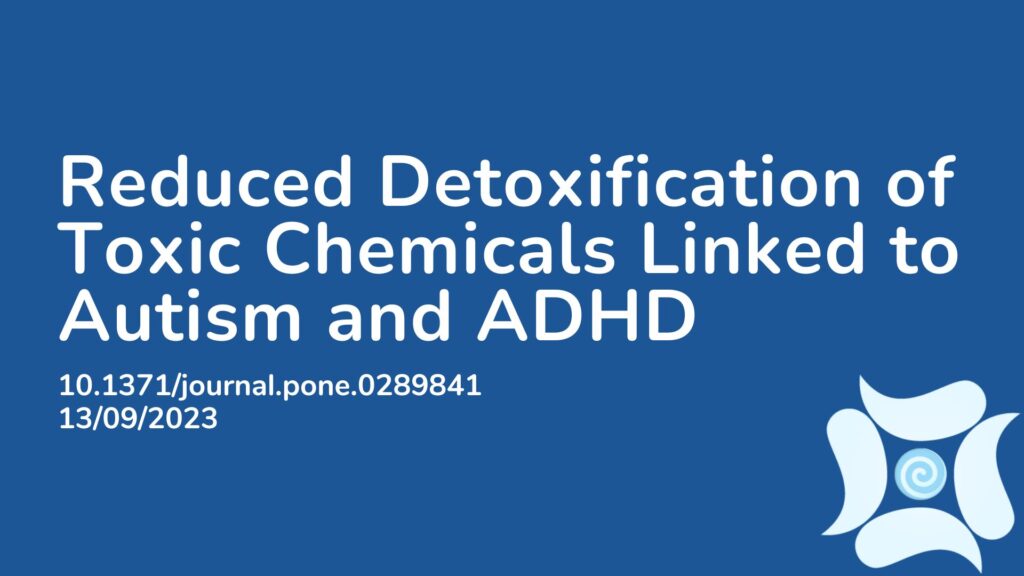Summary:
The cause of autism spectrum disorders (ASD) is multifactorial, but a leading hypothesis suggests that exposure to toxins may affect individuals with genetic susceptibility. This study examined two compounds: Bisphenol-A (BPA) and Diethylhexyl Phthalate (DEHP), commonly used plasticizers in the production of plastics, the manufacture of polyvinyl chloride (PVC), and in the resins that line many food and beverage containers. The primary routes of exposure are through diet; however, inhalation and personal care products also contribute. Some studies have shown evidence of a link between plasticizer exposure and neurodevelopmental disorders. Several mechanisms have been proposed, such as plasticizers acting as endocrine disruptors. This study hypothesized that the connection is due to a genetic inability to detoxify plasticizers like BPA and MEHP. The primary metabolic and excretion pathway for BPA and DEHP involves glucuronidation, a process that makes substances more water-soluble to facilitate their elimination through urination. The authors theorized that detoxification of these two plasticizers is impaired in children with ASD and ADHD. They assessed this by examining glucuronidation efficiency in three groups of children: 66 with ASD, 46 with ADHD, and 37 healthy controls. Urine samples were collected from each child, and glucuronidation efficiency values were derived, including those for BPA and MEHP. The results showed that glucuronidation efficiency for BPA was reduced by 11% in children with ASD and 17% in children with ADHD compared to controls. DEHP followed similar trends, though the differences were not statistically significant. The authors concluded that both ASD and ADHD share a reduced capacity for detoxifying BPA and DEHP, with the reduction in BPA detoxification being statistically significant.
Abstract:
Background: The etiology of autism spectrum (ASD) and Attention Deficit/Hyperactivity (ADHD) disorders are multifactorial. Epidemiological studies have shown associations with environmental pollutants, such as plasticizers. This study focused on two of these compounds, the Bisphenol-A (BPA) and Diethylhexyl Phthalate (DEHP). The major pathway for BPA and DEHP excretion is via glucuronidation. Glucuronidation makes insoluble substances more water-soluble allowing for their subsequent elimination in urine. Hypothesis: Detoxification of these two plasticizers is compromised in children with ASD and ADHD. Consequently, their tissues are more exposed to these two plasticizers. Methods: We measured the efficiency of glucuronidation in three groups of children, ASD (n = 66), ADHD (n = 46) and healthy controls (CTR, n = 37). The children were recruited from the clinics of Rutgers-NJ Medical School. A urine specimen was collected from each child. Multiple mass spectrometric analyses including the complete metabolome were determined and used to derive values for the efficiency of glucuronidation for 12 varied glucuronidation pathways including those for BPA and MEHP. Results: (1) Both fold differences and metabolome analyses showed that the three groups of children were metabolically different from each other. (2) Of the 12 pathways examined, only the BPA and DEHP pathways discriminated between the three groups. (3) Glucuronidation efficiencies for BPA were reduced by 11% for ASD (p = 0.020) and 17% for ADHD (p<0.001) compared to controls. DEHP showed similar, but not significant trends. Conclusion: ASD and ADHD are clinically and metabolically different but share a reduction in the efficiency of detoxification for both BPA and DEHP with the reductions for BPA being statistically significant.
Article Publication Date: 13/09/2023
DOI: 10.1371/journal.pone.0289841



